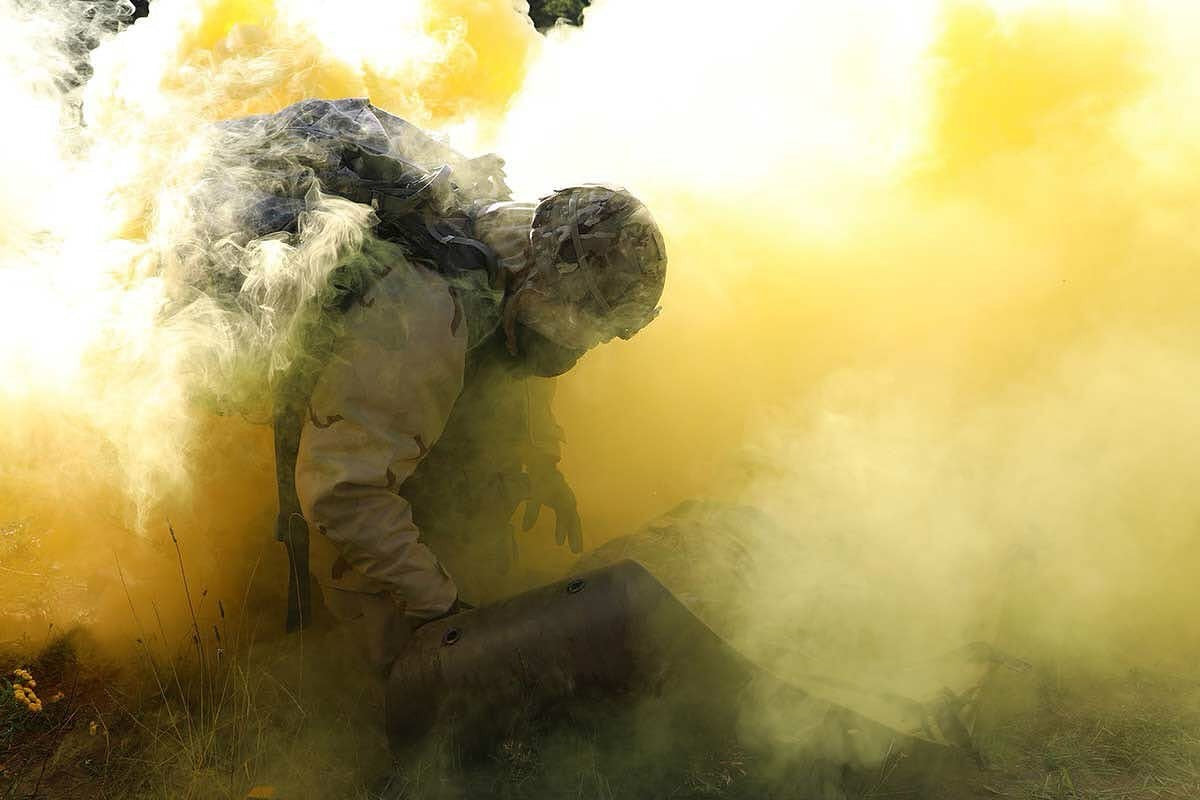The Camouflage of Bunkers and Fortifications: Advanced Strategies for Concealing Defensive Structures
In modern warfare, discretion means survival.
A cleverly camouflaged bunker is not just a shelter — it’s a tactical advantage. Satellites watch, drones scan, sensors detect. Every element matters.
Camouflage has become a scientific discipline — a precise balance between technology, terrain, and deception.
1. Integrating Fortifications into the Landscape: Blending Structure with Nature
The foundation of effective camouflage begins with the ground itself.
A bunker that stands out attracts attention, even without movement. In contrast, a structure firmly anchored in the terrain almost vanishes from sight.
In mountainous areas, rock faces provide excellent natural cover. In plains, natural depressions or dry riverbeds make ideal hiding places. The key is to work with nature, not against it.
A partially buried shelter often offers the best compromise. It follows the land’s contours, minimizes shadows, and shields against temperature shifts. Builders often add layers of earth, local stones, or even native vegetation. Anything that breaks symmetry is an ally.
Even paint plays its role. No perfect patterns. No clean lines. Uneven tones, rough textures, irregular shades. The goal is simple — to make the eye hesitate, to blur the shape until it melts into the background.
2. Defeating Radar and Infrared Detection: Erasing the Technological Footprint
In the digital age, danger isn’t limited to what can be seen — it lies in what can be sensed.
Radars, thermal cameras, multispectral sensors — they all track heat, resonance, and signal reflection. To escape detection, one must hide not the form, but the signature.
Radar-Absorbent Coatings
These substances, known as RAM (Radar Absorbent Materials), capture radar waves instead of reflecting them.
For instance, a paint infused with ferrite or conductive polymers converts radar energy into diffuse heat. The result? A blurred echo, sometimes no echo at all.
Some armed forces employ modular RAM panels fixed onto exterior walls — a “second skin” of sorts. Though expensive, this layer of stealth is worth it, especially for critical installations.
Managing Heat: Controlling the Infrared Signature
Heat betrays. Generators, engines, ventilation ducts — all emit.
To neutralize that signature, it must be isolated and diffused.
Low-conductivity materials such as aerogels or ceramics reduce hot spots. Underground heat-dissipation networks spread thermal output into the soil, where it disperses harmlessly.
Some high-end bunkers go further: they harmonize their surface temperature with ambient air using sensors and active regulation systems.
Thus, an infrared drone perceives only a smooth, uniform background — no contrast, no target.
3. Multispectral Nets and Meshes: Modular Protection for Hidden Structures
When burial isn’t possible, covering becomes essential.
Modern camouflage nets are no longer simple green fabrics — they’re advanced multispectral systems.
Under visible light, they mimic foliage. In infrared, they absorb or reflect heat as needed. Against radar, they scatter signals to create confusion.
Each fiber serves a purpose: some reflect, others diffuse, others absorb. Together, they weave a full-spectrum defense.
On bunkers, these nets protect exposed areas — entrances, roofs, visible walls. Easy to deploy, they adapt to terrain and season. Their tones shift with the landscape — moss green in spring, earth brown in autumn.
Of course, nothing lasts forever. Wind, rain, and sunlight eventually degrade performance. Regular maintenance remains vital to preserve multispectral efficiency.
4. Deception, Simulation, and Confusion: The Art of Military Countermeasures
The best hiding spot? Sometimes, it’s another one entirely.
Illusion can divert attention, buy time, and save lives.
Defense engineers often build dummy structures — lightweight, hollow bunkers placed far from real ones. The enemy strikes them, wastes ammunition, and believes it has found its target.
Electronic decoys add another layer. Devices emit false thermal signatures, radar simulators project phantom echoes, and jammers flood detection systems with interference.
The result is chaos. On enemy screens, signals overlap, points multiply, maps blur.
When an attack draws near, smoke screens activate — often enhanced with infrared-blocking agents. Behind that veil, a bunker can rearrange, move equipment, or deploy troops undetected.
Deception turns into defense. Confusion becomes a weapon.
5. Case Studies and Cutting-Edge Innovations
Camouflage evolves. Modern systems go far beyond paint and pattern.
Nakidka: The Stealth Skin
Developed in Russia, Nakidka is a composite fabric used on tanks, shelters, and bunkers.
It can reduce radar reflection by up to sixfold and cut thermal visibility by half.
Its secret lies in its layered structure — one layer absorbs, another reflects, the last disperses.
Together, they create a fog-like shroud against enemy sensors.
Adaptive Camouflage: The Era of Intelligent Concealment
Innovative “smart textiles” shift color based on their surroundings. One day lush and green; the next, sandy and dull.
Some prototypes go even further — micro-sensors connected to AI analyze the environment and adjust colors in real time.
The dream? A fully adaptive bunker — invisible across every spectrum, requiring no human input.
6. Frequently Asked Questions
Why is bunker camouflage so critical?
Because detection leads to destruction. The less visible you are, the greater your chance of survival.
What are the most effective radar-resistant materials?
Radar-absorbent coatings made from ferrite or conductive polymers remain the most efficient — especially when integrated directly into structural surfaces.
Are multispectral nets truly versatile?
Yes. Whether forest, desert, or mountain, each net has a tailored pattern. Adjusting color and density to the setting ensures optimal results.
Is multispectral camouflage worth its cost?
Absolutely. In a world where sensors see beyond human limits, silence and invisibility equal superiority.
7. Conclusion: The Art of the Invisible
Concealing a fortification isn’t just painting a wall — it’s building an illusion.
Terrain shields, materials absorb, heat balances, light scatters.
Everything works toward one purpose: to become undetectable.
When shelters blend with stone and technology yields to nature, camouflage reaches its peak — tactical transparency.
And tomorrow?
Perhaps living structures — breathing with the wind, adjusting their own temperature, evolving with the landscape.
The camouflage of the future will be biological, adaptive, maybe even self-aware.
For now, today’s methods — terrain integration, radar coatings, multispectral nets, and electronic decoys — already form a formidable defense.
Invisible doesn’t mean nonexistent.
Invisibility means invulnerability.
Best regards,
The Nutsof Team
Advanced Camouflage & Defense Solutions
🌐 www.nutsof.com
Follow us on Facebook and Instagram for the latest in advanced military camouflage technologies.


